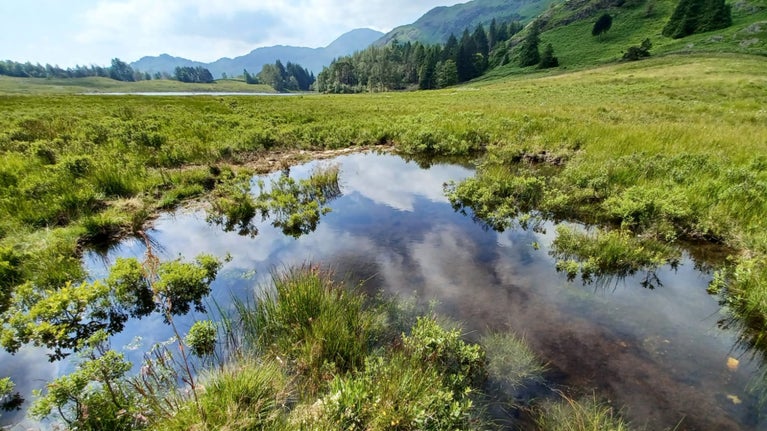Riverlands wetland restoration at Blea Tarn
- Published:
- 11 February 2025
- Last updated:
- 11 February 2025

Find out about the landscape restoration work taking place at Blea Tarn as part of the Riverlands programme.
The Blea Tarn wetland restoration project got underway in June 2024. It is part of the national Riverlands project which is focussed on improving the health of some of most precious UK rivers.
The Lake District Riverlands project stretches from Keswick in the north to Kendal in the south, across the central fells and finally out to sea. It encompasses the rivers themselves, the land which drains into them, and the rich array of wildlife and plants that call these varied habitats home. Together, these make up our ‘riverlands’.
Working with our partners, we are restoring rivers and catchments to be healthy, clean and rich in wildlife and creating sustainable plans for their long term care. By slowing the flow of water through the wetland and encouraging the water to spread out across the landscape, the project is encouraging a healthy, resilient wetland to develop. Pools and wet areas will provide habitats for a variety of plants, invertebrates, and amphibians. Heathy wetlands are also an important means for capturing and storing carbon, supporting climate change mitigation.
It has been amazing to see the almost immediate impact that the project is having on the surrounding wetland – this photo shows the water being held behind one of the blockages just a day after being installed.
Not only is this restoring the wetland around the ditch, with many of the side channels now flowing again, but it’s also creating wonderful pool habitats. And we’ve already spotted lots of fish using the pools.
Once the digger work is finished, the rangers will be working with volunteers to install the final blockages by hand, made up of much lighter timber and brash bales.
Check the Lake District Riverlands page for updates on progress.